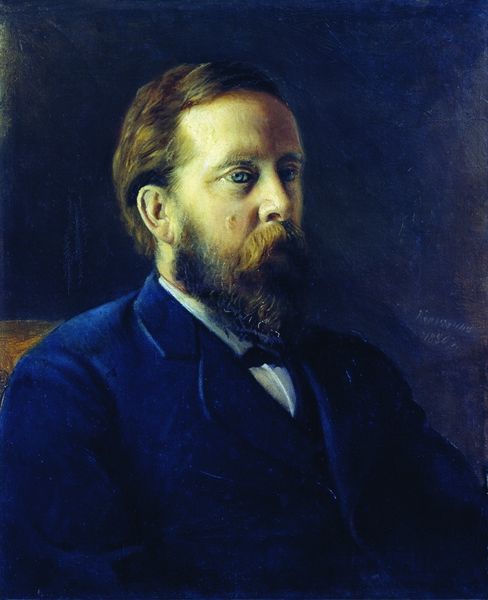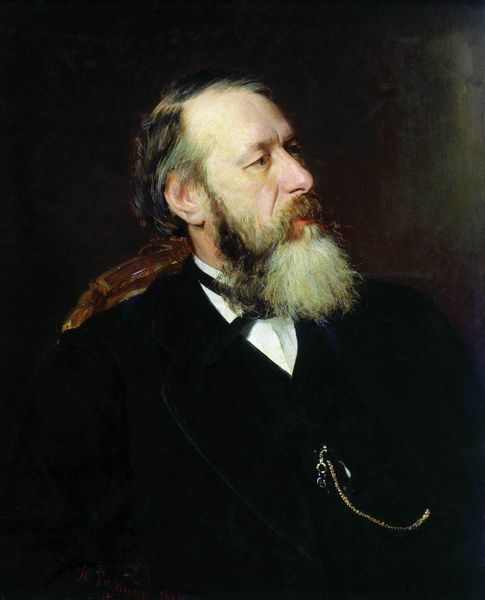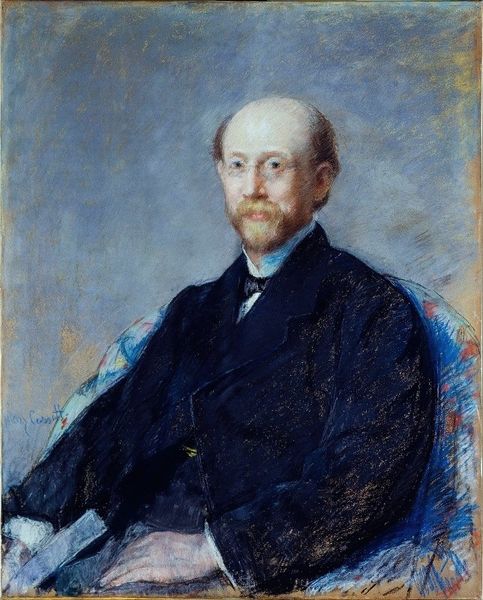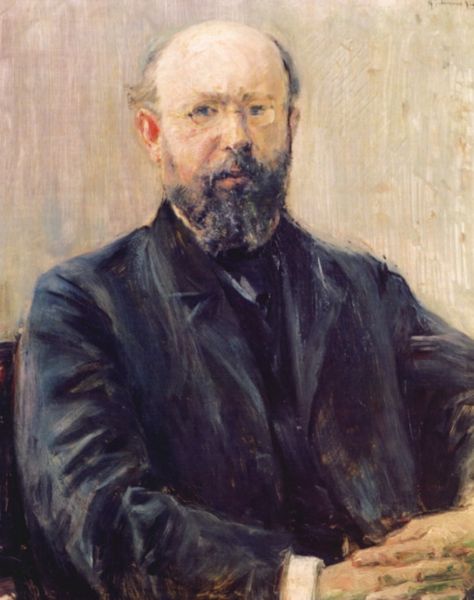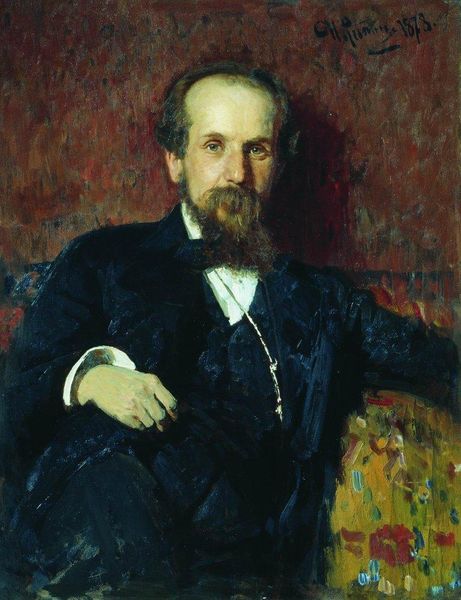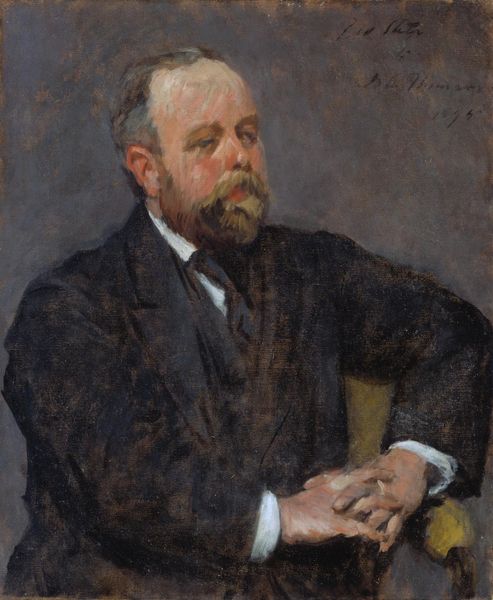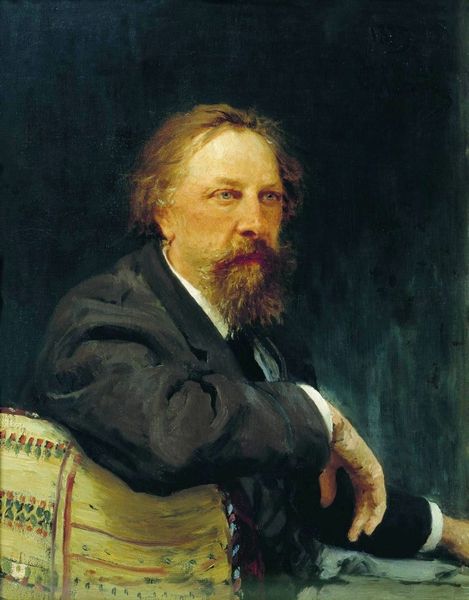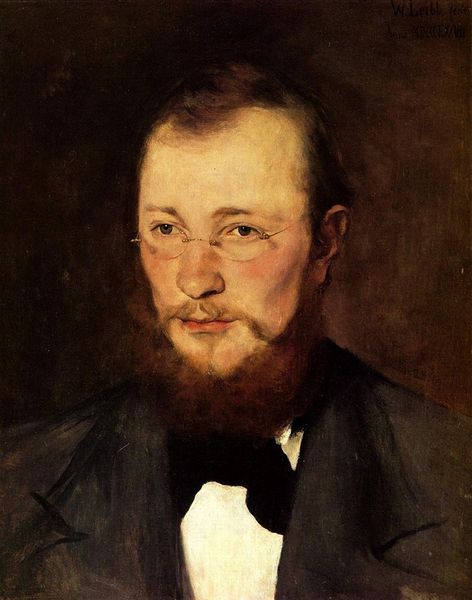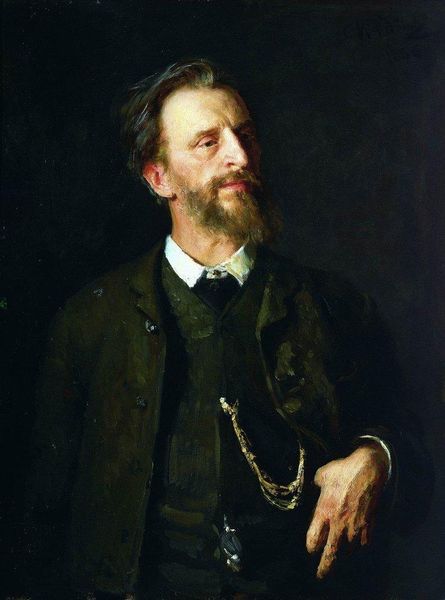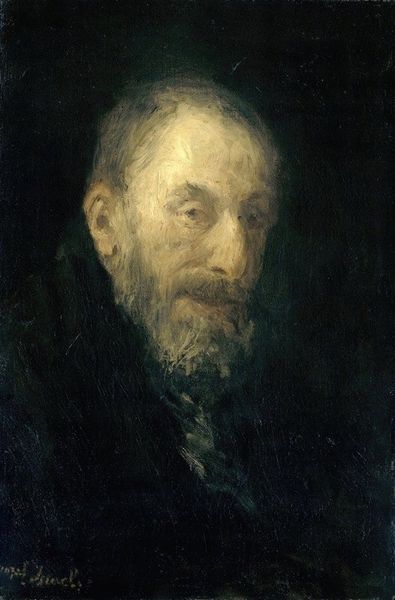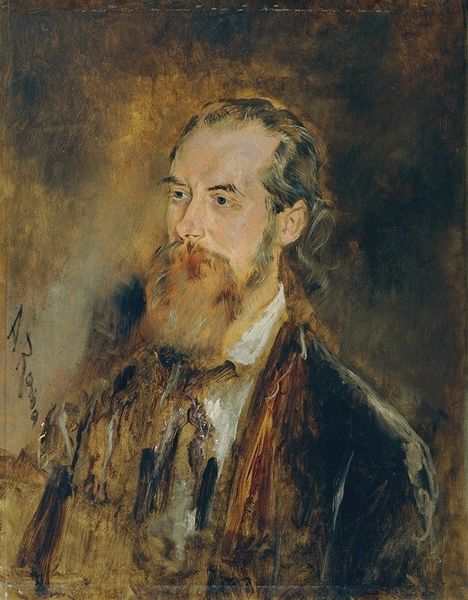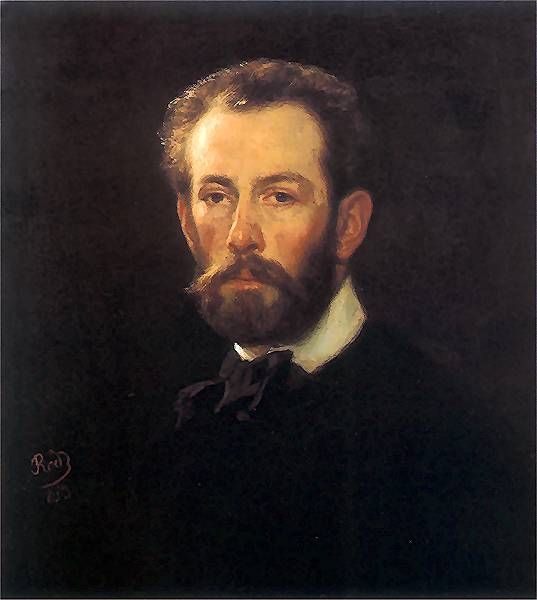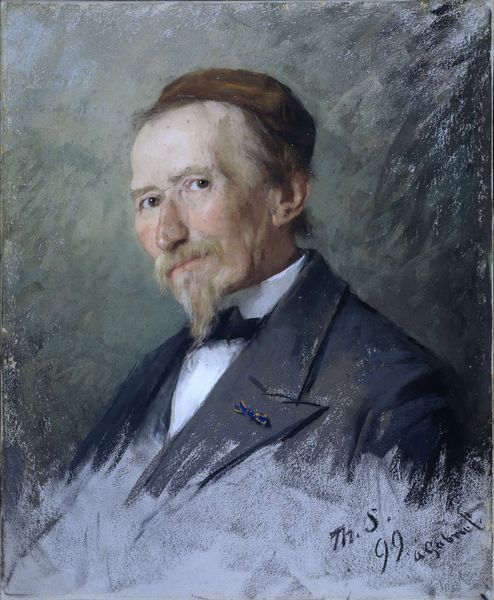
#
portrait
#
oil painting
#
portrait reference
#
male-portraits
#
portrait head and shoulder
#
animal portrait
#
animal drawing portrait
#
portrait drawing
#
facial portrait
#
portrait art
#
fine art portrait
#
digital portrait
Dimensions: 101 x 78.5 cm
Copyright: Public domain
Editor: This is Theo van Rysselberghe's "Portrait of Jean Cepeinick," painted in 1881. It's an oil painting, and the sitter’s pensive expression really draws me in. What does this portrait say to you, considering its historical context? Curator: Rysselberghe painted this during a time of rapid social and artistic change in Belgium. Think about the burgeoning bourgeois class and their desire for recognition and respectability. A portrait like this was more than just a likeness; it was a statement of social standing. Editor: So, commissioning a portrait like this was a deliberate act of self-fashioning? Curator: Absolutely. Consider the details: Cepeinick's formal attire, the way he holds his hand to his chin, suggesting intellectualism. How might those elements contribute to conveying particular values to its intended audience? Editor: It almost feels like he's presenting himself as a man of thought, solidifying his place within that rising bourgeois society. Was the location in which the work was intended to be viewed also considered in that performance? Curator: Precisely. The museum functions differently as a point of engagement than, say, someone's parlor in their private residence. It underscores how art isn't just passively received, it’s actively used. Does that make sense? Editor: That helps to situate it within the broader societal trends of the time and place. So the art becomes performative and functional, not just something to be aesthetically enjoyed. Curator: Indeed, understanding those socio-political currents is key to unlocking the full meaning. And that helps give shape to how our audience views this portrait. Editor: That gives me a lot to think about regarding the function of portraiture and its relation to its audience and society! Curator: And perhaps a different appreciation for what images *do*, not just what they *are*.
Comments
No comments
Be the first to comment and join the conversation on the ultimate creative platform.
